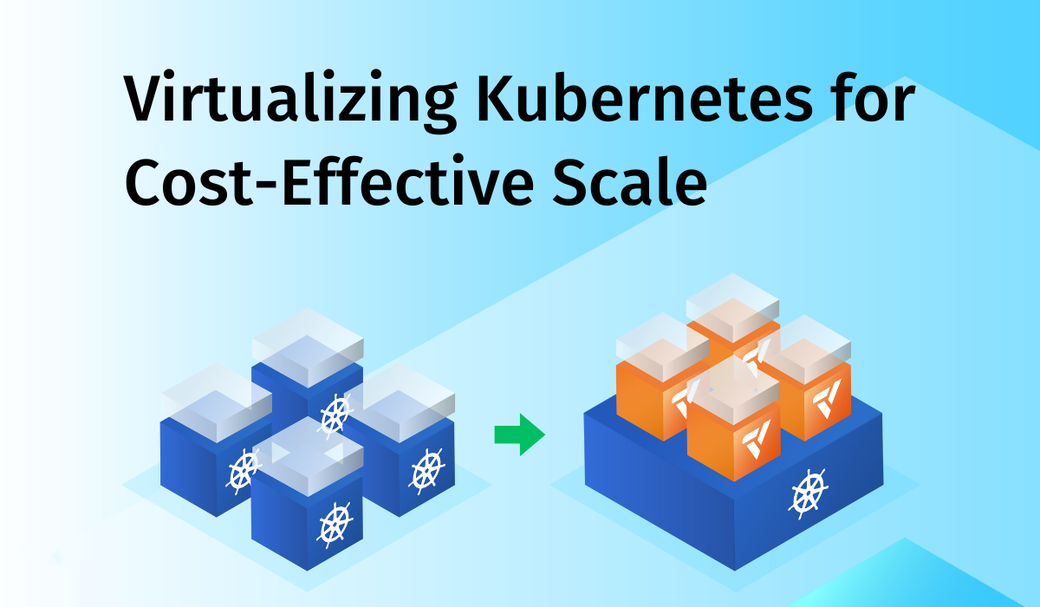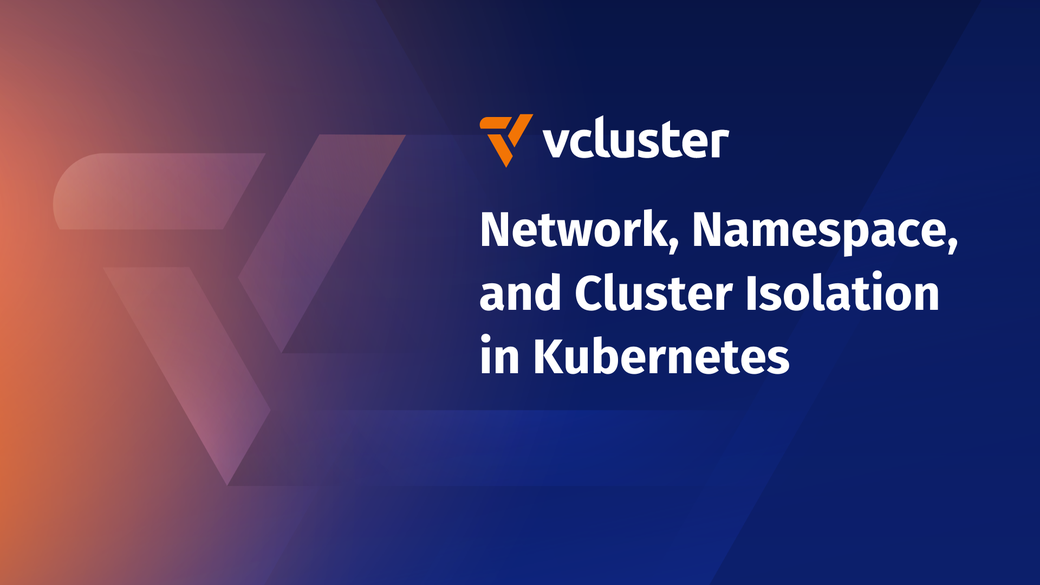Table of Contents
Container deployment has become popular among many engineers, with Kubernetes being their go-to management tool. However, it can be difficult to optimize costs when dealing with multiple Kubernetes clusters. It’s even more expensive for engineering teams that primarily rely on Kubernetes for their workflow.
Virtualizing Kubernetes gives room for spinning up as many clusters as needed while keeping the overall resource costs at a minimum. This post covers the available implementations for virtualizing Kubernetes and how platform engineering teams can benefit from virtual clusters.
#What Does Virtualizing Kubernetes Mean?
Kubernetes virtualization involves creating one or more virtual clusters on a host cluster. This allows for an even distribution of Kubernetes resources among platform engineering teams. Virtual clusters help to reduce computing costs, isolate working clusters better, and scale Kubernetes more efficiently.
Virtual clusters enable a multi-tenancy environment where engineers can gain access to Kubernetes whenever they need it. With Kubernetes virtualization, you have fewer physical clusters but multiple virtual clusters per team. It’s a great hack for boosting Kubernetes productivity.
#What Are the Implementations for Virtualizing Kubernetes?
Multi-tenancy challenges have always been a source of concern among platform engineering teams. There are different implementations of virtual clusters in Kubernetes, but the majority are either unreleased or merely proofs of concept. Let’s look at existing methods for virtualizing Kubernetes clusters.
#Namespaces
Namespaces are a native way to share cluster resources between multiple users. It allows for the isolation within a single cluster but can only be applied to namespaced objects. This isn’t an effective way to virtualize Kubernetes because namespaces don’t have access to cluster-wide objects such as Nodes, persistentVolumes, StorageClass, etc.
#Smaller Clusters
Some engineering teams looking to scale Kubernetes often resort to spinning up many small clusters. This helps to support multiple tenants as well as enable the usage of disposable ephemeral clusters during testing and development. But a solution like creating many Kubernetes clusters isn’t exactly optimal for cost-effective scale.
#Loft vClusters
vCluster is a virtual cluster creation tool offered by Loft, a multi-tenancy Kubernetes manager. With vCluster, organizations can provide full functional clusters that can run inside a namespace of a Kubernetes cluster. vCluster can work on local and on-prem clusters, vendor-managed clusters, or certified Kubernetes distributions.
#Why Should Organizations Consider Virtualizing Kubernetes?
A virtual cluster shares most resources with its host Kubernetes cluster but has its own separate API server, etc, and controller manager. Engineers can utilize virtual clusters for CI/CD pipelines, ephemeral environments, production workloads, and any other use case of Kubernetes clusters. Here are the major impacts of virtualizing Kubernetes in any organization:
#Cost Savings
Organizations are always looking to optimize Kubernetes costs in a number of ways. But virtualizing Kubernetes is the most reliable because it allows for efficient use of resources, reduces the need for additional hardware, and automates the Kubernetes scaling process.
#Flexibility
Platform engineering teams need access to Kubernetes clusters whenever they need it. With Kubernetes virtualization, they can have the flexibility to acquire new resources and scale according to changing demands. This makes it easier for them to meet the needs of different applications and user groups.
#Security
Multi-tenant environments should be particular about the security of shared resources. It’s necessary to isolate clusters, especially when running multiple instances. By virtualizing Kubernetes, security is guaranteed since there’s more isolation between workloads and better control over access to resources.
#Scalability
Virtualizing Kubernetes allows for the creation of virtual clusters for development, testing, and production environments. These clusters can be easily scaled up or down based on demand. It ensures the efficient use of resources and provides a stable environment so applications can remain available and responsive.
#Simplified Management
Using Loft to virtualize Kubernetes is a great way to simplify management. It offers a single point of control where platform engineers can manage all namespaces and virtual clusters. This provides an easier way to monitor and manage cluster resources, deploy applications, and troubleshoot any issues that may arise.
#Improved Performance
Virtualizing Kubernetes improves performance by allowing for more efficient use of resources. Platform engineering teams shouldn’t have to deal with multiple Kubernetes clusters and inefficient virtualization solutions. This helps to reduce the overhead costs associated with all of those.
#Cloud-Native Applications
Virtualizing Kubernetes is particularly useful for cloud-native applications that require fast, efficient, and scalable infrastructure. Virtual clusters are a cost-effective solution that can help organizations stay competitive in today’s fast-paced and dynamic business environment.
#How Can Platform Engineering Teams Manage Virtual Kubernetes Clusters?
Platform engineering teams cannot afford to depend on multiple namespaces or a couple of small clusters since they aren’t very cost efficient. On the other hand, virtual clusters provide better isolation and are much cheaper. Engineers can also have full admin access to virtual clusters. Here are crucial things for platform engineering teams to consider when virtualizing Kubernetes.
#Monitoring and Alerting
As the number of virtual clusters increases, it becomes more challenging to monitor and manage them effectively. Platform engineering teams that virtualize Kubernetes should try to implement robust monitoring and alerting systems to detect and resolve issues quickly.
#Security
Virtualizing Kubernetes creates additional attack vectors, which can make the platform more vulnerable to security breaches. Platform engineering teams should implement robust security measures, including role-based access control (RBAC), network segmentation, and encryption, to ensure the platform’s security.
#Automation
Multi-tenancy environments typically require a whole lot of resource management. It’s critical to utilize automation when running large-scale Kubernetes deployments. Platform engineering teams should leverage automation tools to streamline cluster provisioning, deployment, and scaling.
#Resource Allocation
As the number of virtual clusters increases, resource allocation becomes more critical. Providing too many resources would defeat a major purpose of virtualization—saving costs. So, platform engineering teams should carefully allocate resources to ensure that each virtual cluster has the right number of resources.
#Disaster Recovery
Disasters or outages are inevitable, so platform engineering teams should endeavor to have a robust disaster recovery plan in place. The plan can include backup and recovery procedures for virtual clusters, as well as failover mechanisms to ensure continuity of operations.
#Cluster Sprawl
Cluster sprawl is a common issue that platform engineering teams should consider when virtualizing Kubernetes clusters. This occurs when there are too many Kubernetes clusters in an organization, making it difficult to manage and optimize resources. Virtualizing Kubernetes clusters can help reduce cluster sprawl by allowing multiple tenants to share the same physical infrastructure, thereby reducing the number of clusters needed. Additionally, using a virtualization layer can simplify cluster management and allow for better resource allocation across multiple tenants.
#Conclusion
Virtualizing Kubernetes can be done through the creation of multiple namespaces and many small clusters. But virtual clusters help to combine the benefits of both traditional solutions. Furthermore, a virtual cluster has its own API server, control panel, and storage back end. It’s also easier to maintain and scale resources.
Platform engineering teams can implement virtual clusters on any Kubernetes platform. Only a few resources such as pods and services are shared between the host and virtual cluster. This allows for isolation so virtual clusters don’t interfere with each other.
There are so many benefits of virtualizing Kubernetes such as flexibility, scalability, cost optimization, cloud-native applications, etc. Platform engineering teams should ensure that virtual Kubernetes clusters are managed properly with the right set of tools.
This post was written by Susan Ogidan. Susan is a technical content writer who loves to explore developer-facing tools and share valuable insights on them. Susan is an entry-level full-stack developer who strongly believes in the power of code.










